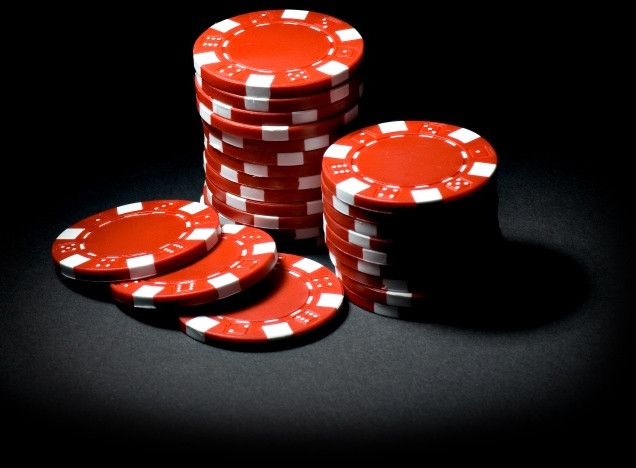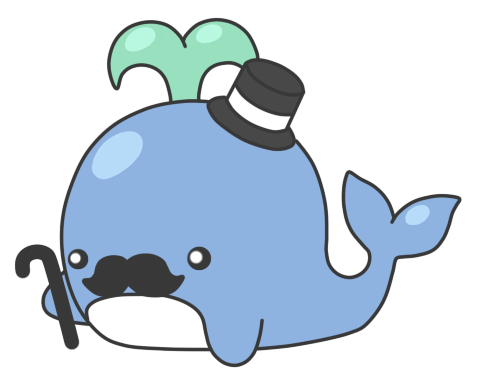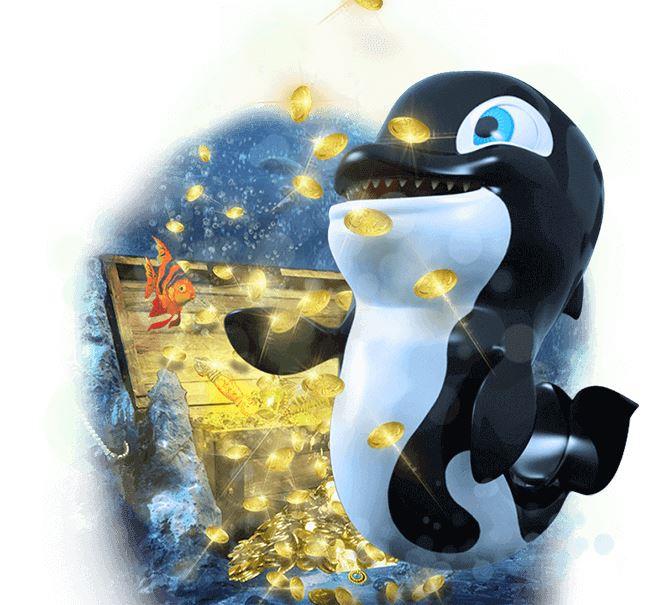- The Reviews
- UNIBET Review 2026
- MANSION Review 2026
- BETSAFE Review 2026
- BWIN Review 2026
- BETSSON Review 2026
- JETBULL Review 2026
- WILLIAM HILL Review 2026
- BET-AT-HOME Review 2026
- ZET Casino Review 2026
- CASINO.com Review 2026
- Mr GREEN Review 2026
- 888 Review 2026
- VEGAS CASINO ONLINE Review 2026
- LAS-VEGAS USA Casino Review 2026
- SUN PALACE Casino Review 2026
- ROYAL ACE Casino Review 2026
- PLANET 7 Casino Review 2026
- CLUB WORLD Casino Review 2026
- SILVER OAK Casino Review 2026
- Free Casino Games
US
- Best Online Casino Games Guide
- Choose Your Best Online Casino
- The Best Casino Games
- Online Card Games
- Best Online Machine Games
- Table Games
- Online Slots
- Complete Modern Online Blackjack Guide
- Free Blackjack Basic Strategy
- Simplified Blackjack Playing Strategy
- How to Play Blackjack Online Like Pros
- Advanced Blackjack Rules and Strategy
- Step-by-Step Blackjack Playing Procedures
- Blackjack Playing Options Guide
- Master Blackjack Card Counting
- Modern Blackjack Card Counters Challenge
- Which is the Best Blackjack Betting System?
- Nine-Count Blackjack Strategy Review
- Blackjack Myths and Errors
- Online Roulette
- Sportsbook
- Online Poker
- Online Video Poker
- Online Scratch Cards
- Online Bingo
- Online Baccarat
- Online Craps
- Asian Casino Games
- Online Keno
- Online Sic Bo
- Casino Bonuses
- Online Casino Reviews
- UNIBET Review, Casino, Sportsbook, Poker & Live Dealers
- BETSAFE Review, Casino, Poker, Live Dealers & Sportsbook
- MANSION Review, Casino, Sportsbook & Live Dealers
- BWIN Review, Sportsbook, Casino, Poker & Live Dealers
- BETSSON Review, Sportsbook, Casino, Live Dealers, Poker
- JETBULL Review -Casino, Sportsbook, Live Dealers
- BET_AT_HOME Review, Sportsbook, Casino, Poker, Live Dealers
- WILLIAM HILL Review -Casino, Sportsbook, Live Dealers, Poker
- ZET Casino Review
- Mr GREEN Review -Casino, Sportsbook & Live Dealers
- CASINO.com Review -Online Casino & Live Dealers
- Las-Vegas USA Casino Review
- Sun Palace Casino Review
- Royal Ace Casino Review
- Planet 7 Casino Review
- Club World Casino Review
- Vegas Casino Online Review
- Silver Oak Casino Review
- Free Casino Games
High Volatility: The Casino High Rollers Case
The apex of volatility in the casino world is the high roller.
A “Casino High Roller” is relative to the typical player at the casino. A “twenty thousand dollar player,” i.e., a player capable of winning or losing $20,000 in a single visit to a casino, would be a high roller at a rural casino in Elko, Nevada. The same player at the Venetian in Las Vegas, however, would simply be a good player. This is because a $20,000 win or loss at the Venetian, which has a monthly gross gaming win of over $40 million, is statistically unimportant.
In contrast, it would be statistically relevant to a casino whose monthly gross gaming revenues were less than one million dollars.
The highest of the casino high rollers are the “whales” – players whose gambling habits are statistically relevant to even the largest casino companies.
The Highest Casino High Rollers: The Casino Whales
Calling them casino high rollers is inadequate. They often tip more than some casino high rollers spend. They get virtually anything they want. Complimentary suites for an entourage of a dozen are not a problem. A side vacation to Disneyland is arranged gratis. A private jet to ferry the group around is always fueled and waiting.
Free everything – food, shows, gifts of diamonds and gold. All except the gambling. Here the credit lines can be ten million dollars, only because some credit lines must be established. Some bet a hundred thousand dollars a hand. They are simply called whales because they are the biggest catch in the sea.
Only a few casinos dare deal to a whale. He can make the casino rich, or he can make the casino poor. During one trip he can beat you out of ten million dollars, the next he might lose as much.
- Bonus Amount: $3,000 up to $10,000. The best daily bonuses on the internet.
- Games: An incredible number of slots, table games, and video pokers, including HTML5 games.
- Strong security protocols of 128-bit encryption
- Audited and guaranteed fair by TST
- Website: https://www.lasvegasusa.eu/casino/
- Established: 1999
- Software: Real Time Gaming (RTG)
- US and Canadians players supported
- Platforms Supported: Windows, Mac, iPhone, iPad, & Android.
- Type of Casino: Online & Instant or download.
- Free Slots Games: Yes
- Customer Support: 24/7 live chat support, as well as a toll-free phone number: +506-283-0061, and e-mail support
Write your review of Las-Vegas USA Casino
- Website: http://www.royalacecasino.eu
- Casino Type: download client, instant play, and mobile
- Software: Real Time Gaming (RTG)
- Owner: Emoney Processing Casinos LTD
- Established: 2009
- Casino Promotion: 100% Match Deposit Bonus up to $4,000, Daily and Weekly Bonuses
- Coupon Code: CASINO400
- Currencies: US$, Euros, Yen, Pounds, Bitcoin
- Mobile: both desktop and mobile compatibility
- VIP Program: 5 levels Available
- Support: World Class Support, 24/7 live chat & Toll-free phone number for USA and Canada
- Security: 128-bit SSL encryption
- Certified by: CDS (Central Disputes System)
- Languages: English
- License: Costa Rica
Write your review of Royal Ace Casino
- Bonus: 400% up to $10,000.
- Website: https://www.sunpalacecasino.eu/
- Software: Real Time Gaming (RTG)
- Deposit Methods: ClickandBuy, MasterCard, Money Order, Neteller, Visa Electron, instaDebit, Visa, MST Gift Card, Skrill, Bitcoin
- Withdrawal Methods: ACH, Cheque, Money Order, Neteller, Skrill
- Withdrawal Times: EWallets: 2-5 days, Credit / Debit Cards: 10-12 days, Bank Transfers: 7-12 days, Cheques: 21-28 days
- Pending Time: 3-7 days
- Withdrawal Limit: $5,000 per week
- Games: Incredible number of games of all types
- support: 24/7 through live chat, phone, or e-mail
- Support Response Time: 24 hours via email or Instant using Live Chat.
- Encryption: 128-bit SSL
- Audited and found fair by TST
- Languages: English.
- Progressive Jackpots: up to Million-Dollar.
- Restricted Countries: Bosnia, Costa Rica, Malaysia, Morocco, Netherlands, Russia.
Write a review of Sun Palace Casino
- Bonus: 320% Bonus + 45 Free Spins
- Casino Website: https://www.silveroakcasino.com/
- Casino Promotion: 320% Match Deposit Bonus up to $10,000 in 10 first deposits, up to $100 No Deposit Bonus, Weekly and Monthly Cashback, and much more.
- Casino Type: download client, instant play, mobile, and live dealers
- Software: Real Time Gaming (RTG)
- Live Casino: Available Live Dealers Casino
- Owner: Emoney Processing Casinos LTD
- Established: 2009
- Currencies: US$, Euros, Yen, Pounds, Bitcoin
- Mobile: both desktop and mobile compatibility
- VIP Program: 5 levels Available
- Support: World Class Support, 24/7 live chat & Toll-free phone number for USA and Canada
- Security: 128-bit SSL encryption
- Certified by: CDS (Central Disputes System)
- Languages: English
- License: Costa Rica
Write your review of Silver Oak Casino
- Bonus: First Deposit 350% Bonus + 25 Free Spins
- Website: https://www.planet7casino.com/
- Casino Type: download client, instant play, mobile, and live dealers
- Software: Real Time Gaming (RTG)
- Live Casino: Available Live Dealers Casino
- Owner: Emoney Processing Casinos LTD
- Established: 2008
- Casino Promotion: 200% Match Deposit Bonus up to $4,000, and much more.
- Currencies: US$, Euros, Yen, British Pounds, Bitcoin
- Mobile: both desktop and mobile compatibility
- VIP Program: Available
- Support: World Class Support, 24/7 live chat & Toll-free phone number for USA and Canada
- Security: 256-bit SSL encryption
- Certified by: CDS (Central Disputes System)
- Languages: English
- License: Costa Rica, Cyprus, the United Kingdom, and the Netherlands.
Write a review of Planet 7 Casino
- Bonus: Get 300% Match up to $3000 FREE Welcome Bonus
- Website: https://www.clubworldcasinos.com
- Software: Real Time Gaming (RTG)
- Mobile: Android, iPhone, iPad
- Casino Type: Download, Instant Play, Mobile
- Currency: US dollars
- Language: English
- License: Curacao
- Owner: Club World Casinos Group Casinos
- Established: 2005
- Audit: RTP Not publicly audited
- Currency: US dollars
Write a review of Club World Casino
- Bonus: Get 300% Match up to $3000 FREE Welcome Bonus
- Website: https://vegascasinoonline.eu/
- Established: 1999
- Software: Real Time Gaming (RTG)
- Currencies: US$
- US and Canadians players: supported
- Bonus Amount: up to $11,000 Match Bonus
- Platforms Supported: Windows, Mac, iPhone, iPad, & Android.
- Type of Casino: Download & Online Instant Play.
- Free Slots Games: Yes
- Owner: Main Street Vegas Group Casinos
- License: Costa Rica
- US Customer Support: (877) 691-5124
- Canada Customer Support: (888) 387-6717
- Email Address: [email protected]
- Live Chat: Yes
- Response Time: 24 hours via email or Instant using Live Chat.
- Languages: English.
- Progressive Jackpots: up to 1 Million-Dollar.
Write a review of Vegas Casino Online
The Fear of the Casino High Rollers: The Tale of a Whale
Casino folklore includes a story about one casino that should not have been dealing with a whale.
The casino had a bankroll of only about $3,000,000. The whale hit a winning streak, laying claim to the entire bankroll. The casino, in essence, was busted. “No fear,” thought the operator, “the tables must turn and the casino will win it back before the night is over.”
Unfortunately, the night ended early for the casino.
The whale decided to cash out and fly home.
A Lear jet was waiting. Ironically, the casino was paying for the jet that was going to take the casino’s entire bankroll to the Land of the Rising Sun.
Out of desperation, the operator told the junket representative that he had to think of any way to keep the whale in Las Vegas.
“Please stay an extra night,” went on deaf ears.
The whale was going to leave a winner.
Then the representative came up with the idea.
He asked to accompany the whale on the jet, claiming to have to attend to business across the ocean.
“No harm,” thought the whale, “after all, the casino was paying for the jet.”
His entourage, with the representative in tow, loaded up the limousines, drove to the airport and boarded the plane.
Sitting on the runway, the representative mentioned to the whale that he heard something unusual coming from the jet’s engines and had a funny feeling about flying in the plane.
The whale, being superstitious, immediately wanted nothing to do with the Lear jet.
“No problem,” said the representative. The casino could have another jet available at daybreak. The whale could spend the night back at the hotel.
The whale had another plan. Unexpectedly, he suggested the group fly commercial as a trans-pacific flight was leaving that night from Los Angeles. It was an unusual request because whales rarely fly commercial.
A new dilemma confronted the representative. He knew that some airlines flew every hour to Los Angeles. The whale could have taken any of these flights.
Unaware of the frequency of flights, the whale allowed the representative to lead him to an airline that had only one flight to Los Angeles and a long line of persons waiting to check-in.
By the time the group got to the front of the line, the plane was sold out.
Perhaps, suggested the junket representative, the whale could go back to the hotel and take a morning flight. He agreed but indicated that he would not gamble.
The representative suggested instead that they go to dinner and a show. The whale saw no harm in that plan.
After a nice dinner and the show, the group made its way back to the hotel, through the casino and past the baccarat pit. The whale hesitated just long enough to get hooked. “Just a few hands before retiring for the night,” he thought.
A few hands turned into a few hours. Luck abandoned him and the law of large numbers became his tablemate. He soon lost back the entire $3,000,000 that he won and another $3,000,000 on top of that.
The casino was saved that day. The whale, temporarily discouraged, would return.
Casino Games Blog 2026
The Bitcoin Casino Guide
Casino High Roller: Reducing Volatility to Reduce the Risk
Casinos that deal with casino high rollers or even “midrange” players must understand volatility with their games.
A single-player, like a whale, playing a limited number of hands has a much greater chance of leaving the casino a winner than thousands of “grind” players that play the same amount of money but in smaller increments.
This volatility can hit even the largest casinos. For example, a few years back, the parent company of Caesars Palace had to publicly announce that the company was going to fall short of earnings expectations because of losses sustained in its baccarat pit, generally the domain of the casino high rollers.
Casinos have three options when faced with casino high rollers –
-
- don’t deal with them,
- gamble with them,
- or develop strategies to reduce volatility created by their betting habits.
One strategy utilized by an Atlantic City casino in 1990 involved a “freezeout” game.
Casino High Roller: The Freeze-Out
In February 2018, another Japanese whale who had been betting at very high levels at casinos around the world won $6 million from the Trump Plaza in Atlantic City and $19 million at the Diamond Beach Casino in Darwin, Australia.
Upon returning to the Trump Plaza in May, the casino accepted this whale’s challenge to play baccarat at $200,000 per hand on the condition that he do so until he was either ahead $12 million or behind $12 million.
This condition assured that the whale would have to play many hands to ultimately beat the casino and thereby reduced the game volatility and risk to the casino.
As it turned out, the game was terminated after 70 hours of play and the whale was behind by $9.4 million, although it is not clear who ended the challenge.
One way to see how this freeze-out game reduces the casino’s risk is to compute the probability that the player (or casino) will win if the game is carried to completion.
Calculations using a “gambler’s ruin” model (see below) show that the probability the player would be the ultimate winner in the above-described freeze-out is 18.1% compared to 81.9% for the casino.
That is, the player will win such a challenge less than one in five times.
Another way to look at the effect of the freeze-out is to consider the likelihood of various possible outcomes after 70 hours worth of baccarat, the approximate duration of the whale’s play.
Assuming a house advantage of 1.15% and wager standard deviation of 0.94 per unit (both of these figures are about the average of the respective player and banker values, ties included), for a bet size of $200,000 per hand, and 80 hands per hour, the expected value and standard deviation of the total casino win after 70 hours (5,600 hands) are:
EV(win)= $200,000 × ,5 600 ×.0115 = $12,880,000
With these values, standard normal distribution calculations can be used to obtain the probability of a win in any specified range.
These calculations show, for example, the probability that such a player will be behind by $12 million or more is 52.5%, while the probability this player will be ahead by $12 million or more is only 3.8%.
There’s about an 18% chance the player will be ahead at all after the 5,600 hands.
The following table gives a more complete picture of the likelihood of various outcomes.
Casino Win after 5,600 Hands of Baccarat at $200,000 per Hand
Range ($millions) | Probability |
Less than −24 | 0.4% |
−24 to −18 | 1.0% |
−18 to −12 | 2.4% |
−12 to −6 | 5.1% |
−6 to 0 | 9.0% |
0 to 6 | 13.2% |
6 to 12 | 16.3% |
12 to 18 | 16.7% |
18 to 24 | 14.3% |
24 to 30 | 10.3% |
30 to 36 | 6.2% |
36 to 42 | 3.1% |
More than 42 | 1.9% |
The figures in the above table show how the casino’s risk is reduced when a player plays such a large number of hands (in a negative expectation game). A freezeout game, of course, is intended to do just that.
Was This Helpful?
Recommend us on Facebook










